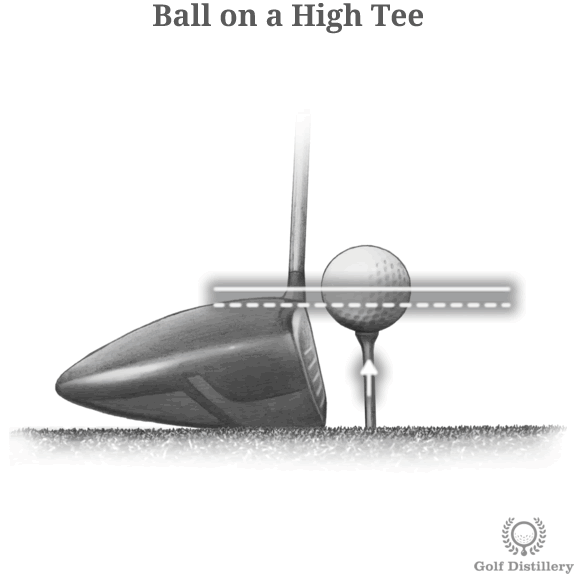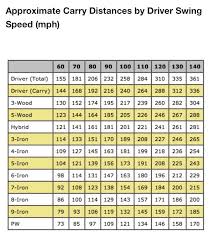
The most important tip for golf putting is to hit your putts hard enough to reach the hole. It doesn't necessarily mean that you shouldn't hit them hard enough for them to roll off the green. This does not mean you should hit them from the wrong distance. We'll be covering the basics of hitting a solid putt, as well as the importance of proper body posture. Once you've mastered the basics, you can practice putting like a pro.
Technique
To make a successful putt, aim for the front edge. To understand this concept, imagine two coins on each side of the line that runs from the ball to the cup. Now, sit down and move your eyes horizontally across the coins. You should feel a strong and cohesive group, rather than a jumble of moving parts. To improve your putting technique, practice with real coins on the green or a yardstick.
Posture

Proper posture and form are key to putting. It can be hard to maintain a proper posture while putting. However, good putting technique is built on correct body alignment. Proper posture allows the shoulders to rock as a pendulum movement and prevents excess hand action. The putter will appear to have a tilted arch if the spine is not straight enough. However, if the golfer avoids varying their stance at address, the tilted arc will be fine.
Position of the body
Standing on the putting course, you should position your body so that the target line is parallel to your shoulders, hips, knees, and hips. The target side should be in the middle of your stance. If you aren't sure how to position your body, bend your knees. This is crucial for stability and consistency. A friend can also practice on the golf putting green.
The green
Visualizing the ball entering the hole is the first step in reading the green. For example, if your putt goes left to right and it breaks, you should ignore the right-hand side of the cup. The ball will likely slip out. Instead, keep your eyes on the top, and try to imagine the putt burning a track in the green as it rolls into it. This will increase your green reading abilities and confidence. Then, you can choose between the two methods until you find the right one.
Counting your paces
Counting your paces when golf letting you know how far you've come in each putt. Pacing off a long putt is a great way to practice your putting. Pacing yourself can help you determine how far to get to the cup. Pace off at the same pace next time you hit long putts. This will allow for you to get an idea of how long your stroke is even though your ball isn’t quite far.
Imagine a putt which travels straight backwards and straight through.

Many golfers think their putts should travel straight through the hole. The common golf tip is to work your putter straight back and through, but this is dead wrong. Practice making putts without a ball, and you'll find that you'll be able to make them straighter and longer than you ever thought possible.
Keeping your head down
Maintaining your head down through impact is one of the keys to good golf putting. You will be able to avoid chasing the ball with both your eyes and will result in straighter putts. Practicing the "dime drill" is a great way to train your brain to focus on the ball instead of your shoulders. It will improve your accuracy, consistency, and fluidity. Here are some tips that will ensure your head stays still while you put.
FAQ
What kind of clothing should I wear on the course?
Golf is a sport that requires you to be dressed appropriately. Wear these:
-
Shoes that fit comfortably - Your feet should be snugly supported by the shoes you choose. They should offer support and stability.
-
Lightweight pants or shorts – Shorts should cover your knees, thighs and ankles. Trousers should be long enough to allow you to bend easily.
-
Long-sleeved shirt. Your shirt should be sun-protective. It should also offer good ventilation.
-
Sweatpants and shorts – Pants should be loose fitting and comfortable. They should allow for you to move easily.
-
Socks – Choose socks that are soft and comfortable.
-
Hat – Make sure you choose a hat that fits comfortably. It should cover both your ears and neck.
-
Sunscreen lotion – Apply sunscreen before heading to the fairway.
How does golf score?
The scorecard is broken down into four distinct categories: Stroke Play (Par 3, Par 4 and Par 5), and Stroke Play (Par 3 & Par 4). Each category is further broken down into strokes. A player must complete 18 holes (Par 72) to reach par.
The lowest score wins.
How can I learn to play golf?
Yes. There are many schools available that can teach you how to play the game of golf. You will have to buy new equipment, including a set golf clubs.
What is the game of golf?
Golf is played on an 18-hole golf course that follows a set of rules known as the Rules of Golf.
The first stroke is taken behind a designated teeing area. The course is divided into several holes, where players alternate hitting the balls. Each hole contains a specific number of strokes depending on its distance from the teeing area.
There are three main types of shots used in the game of golf:
-
A drive shot is where the players use clubs in order to hit it as far as possible. This shot is considered to be the most important.
-
Players must aim for the ball in a specific area of the hole when they attempt an approach shot.
-
A putt is where players try to get the ball in the cup by rolling it on the ground.
The player must finish each hole by making all of his/her putts. If a player fails to do this, he/she loses one stroke for each unmade putt.
A player may choose to play with a caddy or partner who will carry the club around during a round. The caddie usually has no role in determining the outcome of the match but can assist the player with advice about strategy and etiquette.
How much does a round of golf cost?
Prices for each person can be anywhere from $15 to $30 This includes cart rental, greens fees, refreshments, and cart rentals.
What happens at a golf round's end?
At the end of a round, the player with the lowest score wins. However, if two people tie for first place, they both win.
If more than three people are tied for first place after 18 golf holes, they each share the prize money.
If two people are tied after 18 hole, the tournament committee decides who wins the prize money.
Which is the best season to play golf?
Between May and September is the ideal time to golf. There is rarely any rain during this period and the temperatures are usually moderate.
During the winter months, the weather can get very cold. In addition, snowfall makes it difficult to walk the fairways.
Spring and autumn can be difficult because the grass grows too high.
Statistics
- He shanked the first attempt, but it is estimated his second went more than 200 yards (180 m).[52]Golf courses worldwide. Below are the top 20 countries with the most golf courses as of 2019.[53]CountryNumber of (en.wikipedia.org)
- Professional golfers typically make between 60% and 70% of greens in regulation. (en.wikipedia.org)
- Buying a set of Titleist or Taylor-Made irons for nearly $1,000 is simply not necessary and likely a waste of money. (golficity.com)
- They do this by means of assessing and rating courses according to the average good score of a "bogey golfer," a player with a handicap of around 20. (en.wikipedia.org)
External Links
How To
How To Hit A Perfect Bunker Shot
A bunker shot is a type of golf shot where you aim at a specific spot on the green (the hole) to make sure your ball lands there without bouncing off the surface. This is done by taking advantage of the slope of the green. The goal is to guide the ball towards the hole in the shortest path.
Golf is all about finding the best line to get to your goal point. Consider factors like how far you are from your target, the terrain, whether the ball should bounce off the ground, or fly straight, as well as weather conditions.
To achieve a perfect bunker shot, you must first understand its physics. First, you should determine if you are going uphill or downhill. A drawing club is required if you are facing uphill. You will need to swing with a fade if your face is downhill. Next, determine how fast your body needs to move to stop the ball bouncing off of the green. You can do this by measuring the angle between the ball and the direction you're traveling. The final step is to measure the size of your bunker.
These are the basics of swinging. You should swing hard enough to allow the ball to pass the face of your club head, but slow enough so that it doesn't bounce off the green. Once you have the speed and trajectory you want, you can start to approach. Slowly approach the ball until you can see the landing area. Take one more look at the ball and release it. If all goes according to plan you will have a flawless bunker shot.